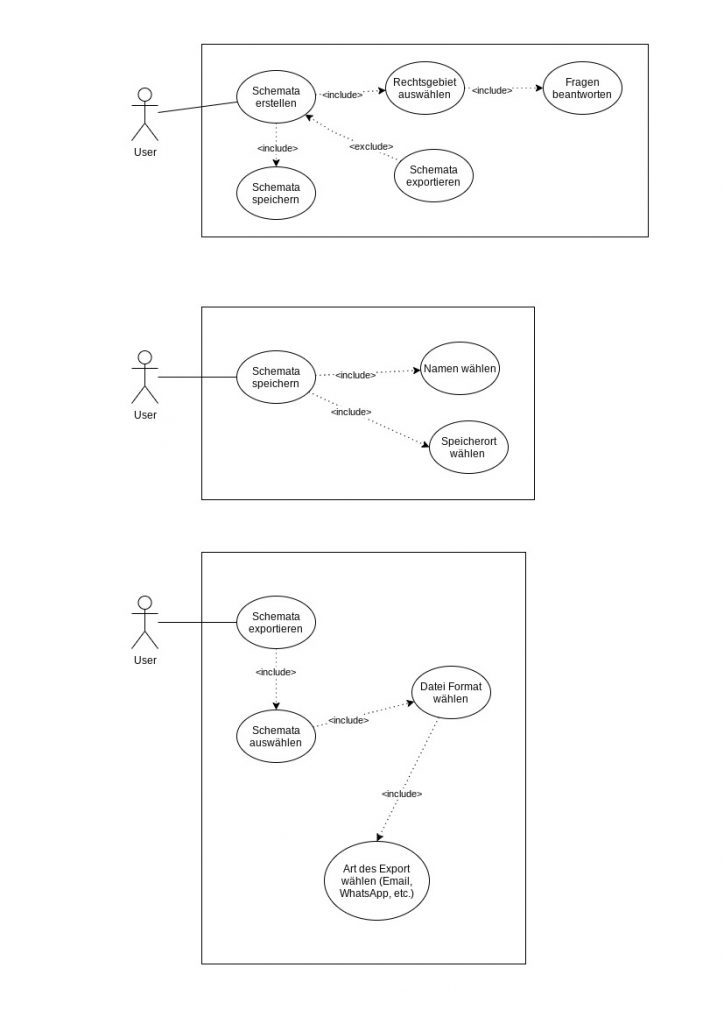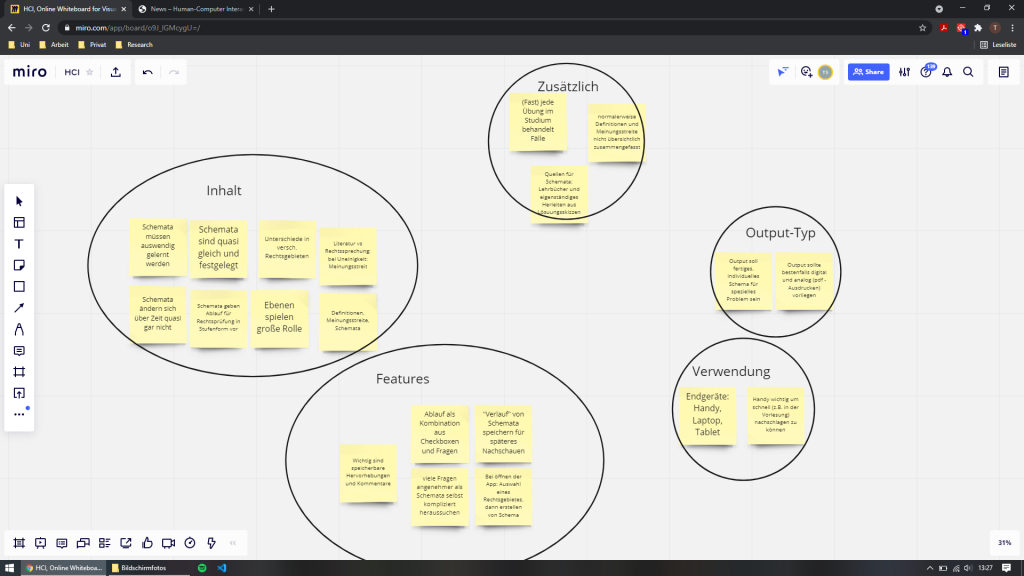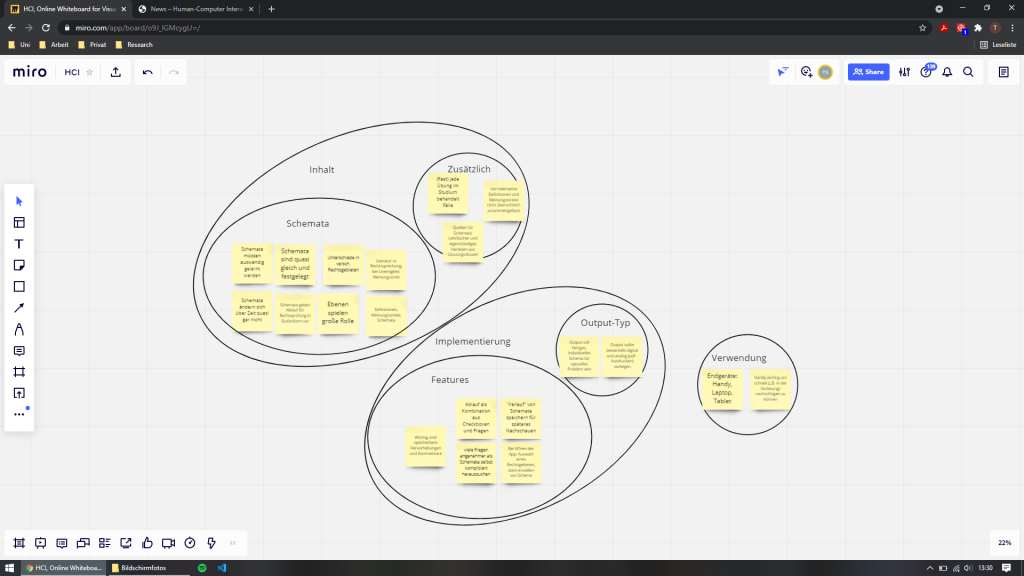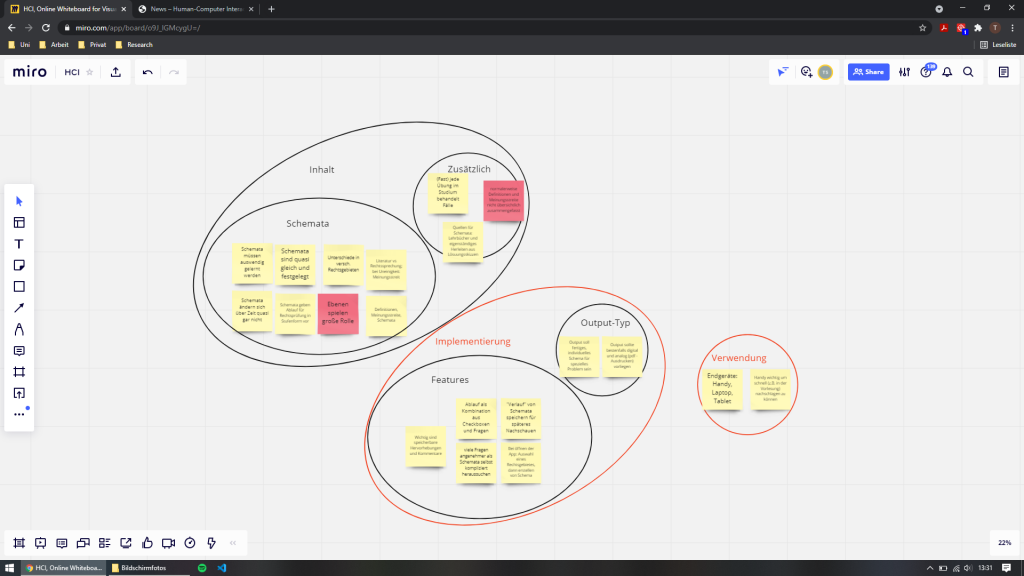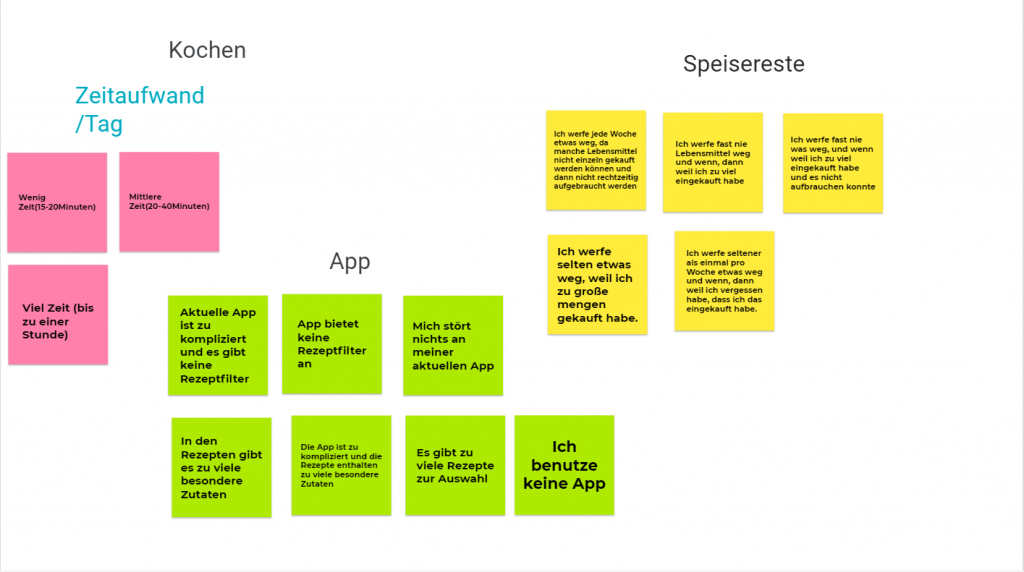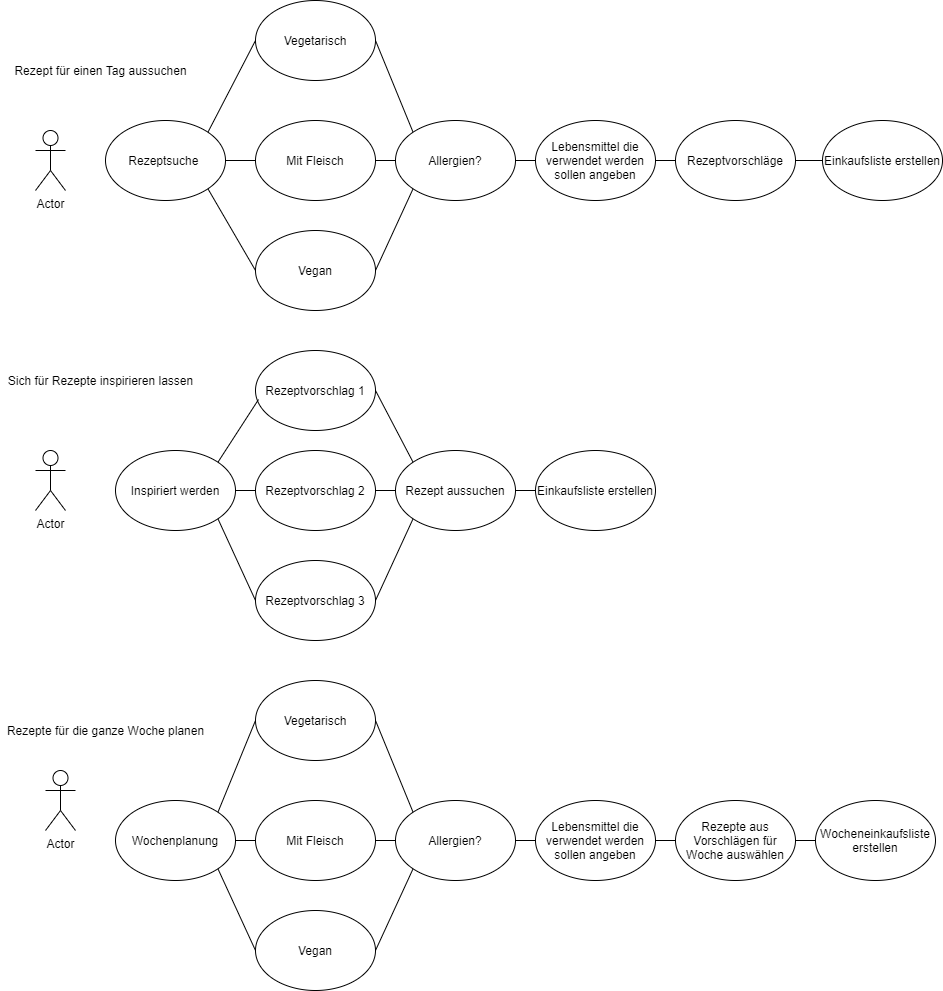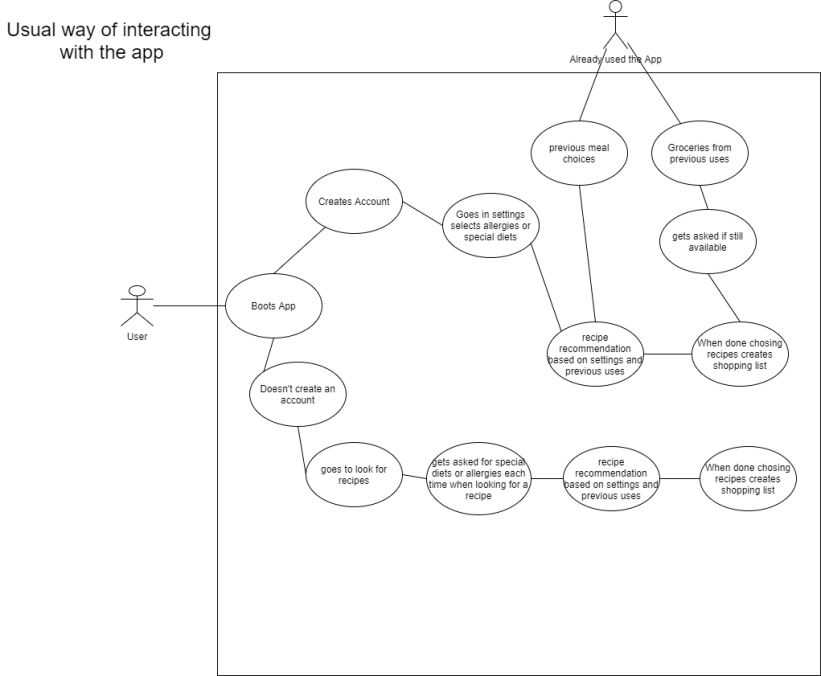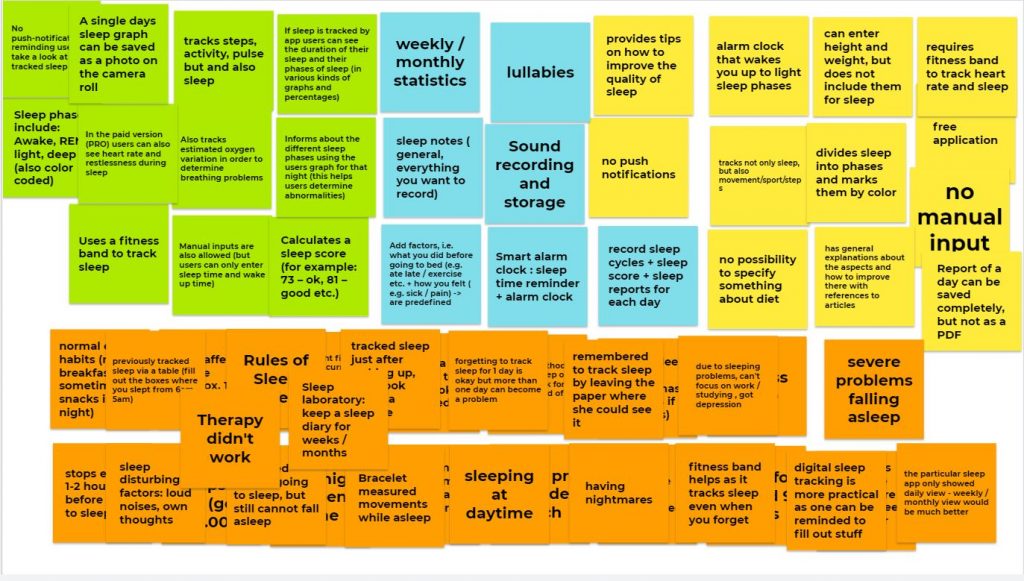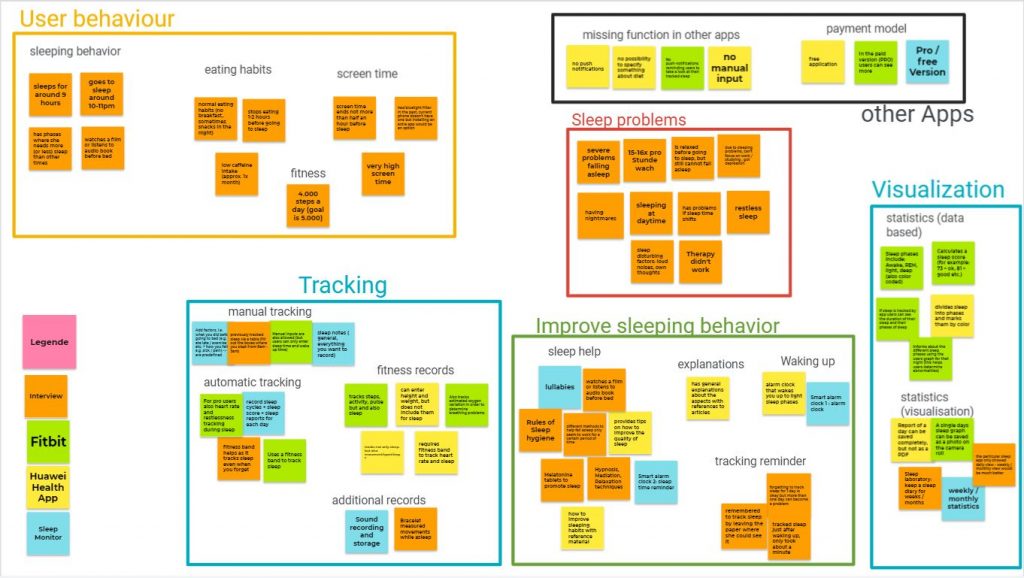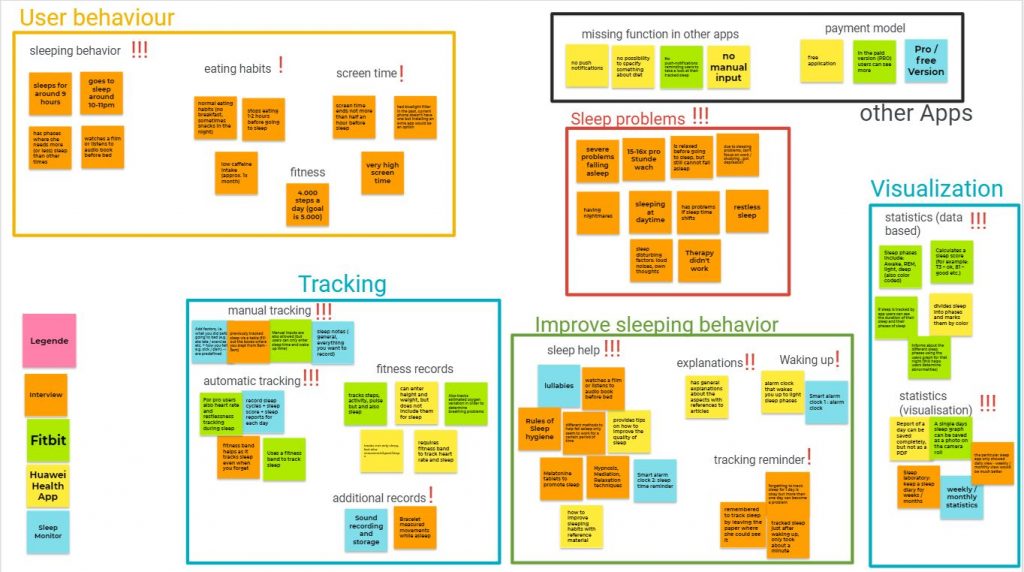Analyze your (qualitative) data using affinity diagramming
Im Folgenden sehen Sie die in der Übung beschriebenen Schritte zum Affinity Diagramming. Der erste Schritt (alle Notizen auf einzelne Punkte aufteilen) wurde dabei nicht extra dokumentiert. Die Priorisierung im letzten Schritt ist durch eine Hervorhebung in Rot dargestellt. Wir finden die Erkenntnisse zur Implementierung (i.e. Features und Output), sowie zur geplanten Verwendung durch den User am wichtigsten. Allerdings sind die beiden rot markierten Inhalte über Schemata und Zusätzliches ebenfalls als wichtig erachtet worden, weshalb wir diese gesondert hervorgehoben haben.
Derive a primary persona from your data-gathering insights
Hier sehen Sie die von uns erstellte Persona „Jura Yun“. Wenngleich auffällt, dass wir bei der Erstellung viel Spaß hatten, hat uns das Erstellen der Persona die Wichtigkeit einer strukturierten Darstellung stark verdeutlicht. Man bekommt ein Gefühl dafür, dass Jura als Fach sehr unübersichtlich ist und dadurch ein hohes Maß an Strukturierung fordert. Andernfalls könnte die Persona (i.e. der User) später leicht überfordert sein und die App wäre keine Erleichterung sondern im schlimmsten Fall sogar eine weitere Hürde im Lernprozess. Die Persona ist als PDF-Datei angehängt.
Create a scenario
Im Folgenden Szenario sind „what“ und „where“ in der hier gezeigten Art und Weise hervorgehoben.
Yun schaut auf sein Handy und weiß, dass gleich sein letzter Kurs vorüber ist. Nach der Uni begibt Yun sich in die Bibliothek um die Übung zum nächsten Termin fertig zu machen. Wie immer stört ihn seine schwere Tasche, die allerhand Schemata enthält. In der Bibliothek angekommen hält er nach einem freien Tisch Ausschau. An diesem Tisch sollte möglichst niemand sitzen, damit Yun seine verschiedenen Schemata ausbreiten kann. Das Suchen ist nervig und manchmal findet er keinen Platz. Heute hat er aber Glück und findet einen freien Tisch. Yun muss heute prüfen, ob der mutmaßliche Täter einen Mord oder nur Totschlag begangen hat. Dafür benötigt er die Schemata des Strafgesetzbuches. Das Schema für Totschlag findet er nicht in seinen Unterlagen. Deshalb muss Yun nun erst einmal im Internet nach diesem Schema suchen. Nachdem er das Schema gefunden hat, legt er sich schon einmal die weiteren Schemata parat, die er für die Prüfung auf Totschlag benötigt. Nachdem er diese Schemata parat gelegt hat, geht er alle diese Schemata durch und prüft, ob er noch weitere Schemata benötigt, damit er den Fall endgültig prüfen kann. Er bemerkt, dass er für eines dieser Schema noch zwei weitere Schemata prüfen muss. Nachdem er den Fall nun endlich geprüft hat, packt Yun seine Sachen zusammen. Weil er nicht weiß, welche Schemata er beim nächsten Mal benötigt, gibt es keine Ordnung in seiner Umhängetasche. Er denkt beim einpacken daran, wie er nächstes Mal wieder erst einmal die
Schemata suchen muss. Mit der Hoffnung, dass es irgendwann eine Lösung für diesen Papierberg, den er tagtäglich mit sich rumschleppen muss, gibt, geht er nach Hause.
Model two use Cases with UML
Hier sehen Sie die erstellten Use Case UML-Diagramme. Wir haben uns für die drei wichtigsten Aktionen der User entschieden. Das generieren von Schemata, das Exportieren der Schemata und das Speichern der Schemata.
